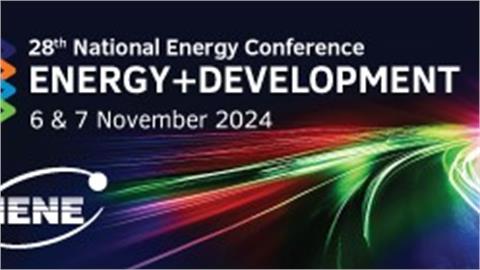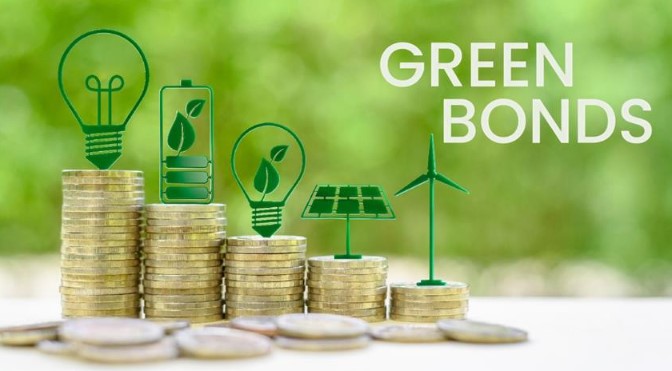The European gas sector is facing major challenges affecting the way natural gas is traded and priced. Oil indexation is the dominant pricing mechanism, but is currently under increasing pressure as trading is gradually shifting to indexation on hub market prices
The European gas sector is facing major challenges affecting the way natural gas is traded and priced. Oil indexation is the dominant pricing mechanism, but is currently under increasing pressure as trading is gradually shifting to indexation on hub market prices. Gas hubs are virtual or physical locations where buyers and sellers of gas can meet and exchange gas volumes. In other words, gas hubs are marketplaces for natural gas.
The Institute of Energy for South-East Europe (IENE) took the initiative and carried out a major research project in order to examine the conditions and prospects forestablishing a Regional Gas Hub for South Eastern Europe. At present, as IENE notes, there is neither a market mechanism to buy or sell gas in an efficient manner in South East Europe, nor a price discovery mechanism to determine spot prices, and gas exchange is based on bilateral agreements.
Energy security has been very high on the list of the EU energy and foreign policy agenda in the last decade. The main goals of the E.U. in the energy security domain are to decrease the energy dependence of member states on as few external suppliers as possible and to promote stable market rules which will make energy markets open and liquid. The EU aims to ensure the diversification of gas supply in order to decrease the market share of the largest foreign gas suppliers, and especially that of its biggest supplier, Russia, in an effort to shift price negotiations to the benefit of European buyers. The transition to a hub-based pricing mechanism is considered by many as a key to EU’s energy dependence problem. Nevertheless, it should be noted that spot pricing does not imply that natural gas prices will necessarily be lower than oil prices, rather that gas prices will be formed based on supply and demand dynamics for gas, rather than for oil.
Today, there are nine (9) natural gas hubs operating across Europe. According to the International Gas Union, gas-on-gas competition in Europe increased from 15% in 2005 to 45% in 2012 while oil indexation decreased from 78% to 50% during the same period. Liquidity is increasing in European trading hubs, while the European Union aims at further increasing of liquidity, in the context of the completion of an integrated and interconnected internal energy market by 2014. The integration is expected to increase the energy market effectiveness, create a single European gas and electricity market, contribute in keeping prices at low levels, as well as increase security of supply. Trade between EU member states will become more flexible and thus, possible curtailments of Russian supplies will have less impact on the European gas market.
Oil-indexed gas prices have been associated mainly with long-term contracts while hub prices have been associated with spot or short-term contracts. Oil-indexed long-term contracts prevailed in the gas sector because they were considered to ensure investment security for the producer as well as security of supply for the consumer. On the other hand, a gas price mechanism which reflects the market value of the product should be considered as a natural evolution for the pricing of a commodity. Indeed, long-term contracts with prices linked to a gas market would ensure a price level reflecting the balance of supply and demand of the product in addition to security of supply.
As the IENE study emphasizes, Europe sees an important opportunity to meet its energy needs by developing the Southern gas corridor, at the core of which are gas supplies from the Caspian area (including Azerbaijan and most likely in the far future from Turkmenistan, Kazakhstan and Iran) and possibly from the Middle East (Iraq).SE European countries (Greece, Croatia, Bulgaria, Romania, Turkey and Serbia) have well established gas markets, with supplies coming primarily through imports from Russia and, in the case of Turkey, from Iran and Azerbaijan also. Greece and Turkey, which have LNG terminals, also import from Algeria, Nigeria, Qatar and from other LNG suppliers. Two countries have a significant proportion of their demand met from domestic supplies (Croatia, Romania) and three others cover small percentage shares from domestic gas (Bulgaria, Serbia, Turkey).
According to IENE forecasts after 2018-19 some marginal gas quantities will become available in the SE European region which could be traded and therefore, as far as trading is concerned, the need will emerge for market prices to be determined. Turkey is already a major gas importer from Russia, Iran and Azerbaijan. In the future Turkey is likely to get gas also from Kurdistan, and most likely from Iraq. In addition, LNG will be another important player in the market, as there are plans for new LNG import terminals in the region. Already two FSRU[1] units are planned to be based in Kavala and Alexandroupolis in Northern Greece, with the prospect of feeding gas quantities into the Greek, Bulgarian and Turkish natural gas systems. The Trans-Anatolian Pipeline or TANAP, whose construction is due to start in 2014, will be connected to Greece through the Trans-Adriatic Pipeline (TAP) pipeline. In addition to Azeri gas, TAP could be used to transport North African gas to Southern Europe and Turkey via reverse flow. There will also be a connection between Greece and Bulgaria and Bulgaria to Turkey via new interconnector pipelines. The immediate result of all of this is that there will be certain gas quantities available for trading outside long-term contracts. Consequently, the establishment of a natural gas trading hub initially to enable trading between Greece, Bulgaria and Turkey, will ensure the determination of market prices through the exchange of marginal gas volumes.
A hub can be a physical point, at which several pipelines come together (e.g. Zeebrugge) or it can be a virtual (balancing) point inside a pipeline system (like the NBP). In other words, a physical hub is an actual transit location or physical point where gas pipelines meet and natural gas is traded. Physical hubs can serve as transit points for the transportation of natural gas, as well as storage facilities. Nonetheless, a hub does not need to be a physical intersection of pipelines.
A virtual hub is a trading platform for the financial transaction of natural gas, where a wide number of participants have access. Physical hubs are implemented at a specific location where natural gas must imperatively be transported to. However, in the case of virtual hubs, the trading platform serves a trans-regional zone or an entire country. Therefore, the traded gas can be injected into any point on a trans-regional or national grid regardless of the point of extraction. The obvious advantage of virtual hubs is that all gas which has paid a fee for access into the network can be traded, while at physical hubs, only gas physically passing at a precise location can be traded and this entails higher risks.
As the IENE study points out, virtual trading hubs, such as NBP or TTF, do not exist in Southern and Eastern Europe. The region is now starting to warm up to the prospect of a liquid market where long-term contracts and spot or short-term trading are combined. The establishment and functioning of a Gas Trading Hub requires a deregulated gas market, which is not the case today in most countries of South Eastern Europe.
However, one could argue that the operation of a physical i.e. transit regional hub, such as the Belgian Zeebrugge, could in future be more possible, due to the flexibility resulting from the operation of the existing and planned interconnections in the region. The region could serve as a transit route for carrying Azerbaijani gas to smaller hubs that are planned in the region, as well as to the Central European Gas Hub in Austria, which is the newest gas hub in operation today. Like the Zeebrugge, a hub where pipelines physically meet, regional hub storage and LNG facilities, as well as pipeline connections, could become a possible balancing point for both storage and transportation. On the other hand, a virtual hub would offer even greater flexibility, because in virtual hubs, the eligible gas for trading is all the gas which has paid a fee for access into the network. Especially when moving towards an entry-exit system – which is required by EU regulation for member states - virtual hubs are more suitable for gas trading.
The IENE study further notes that the establishment of a regional natural gas hub is expected to facilitate the wholesale trading of natural gas between participants in South Eastern Europe. Essentially, it will allow gas supply and demand to meet in a marketplace by providing a platform for physical and/or financial transaction. It will enable competitive markets to function, even though it will probably have an administrative role in the beginning of its operation.
An important issue to be addressed is where the gas hub will be based. Increased supply optionality and infrastructure development are prerequisites for creating a market in the region. At the moment there are several pipeline connections planned in South Eastern Europe, as well as two FSRU facilities and an underground storage facility in Northern Greece. Both Greece and Turkey have expressed interest in establishing a gas hub for the region.
Storage will also play an important role in providing physical gas flexibility, underlines the IENE study. The role of gas storage is critical as it can serve as an important flexibility tool and may affect the location of the hub, if physical. If the hub operates as a physical hub, it is possible that the TAP/IGB/IGT junction can serve as a physical hub. In this respect, the creation of an underground gas storage facility in South Kavala depleted gas field is key, especially if Greece is to take a lead role in this initial stage.
Latest political and market developments in the region are indicative of parallel moves for the establishment of two major regional hubs, one in Thessaloniki or Athens linked to the Athens Energy Exchange (in the process of being set up) and the second in Istanbul linked to the EPIAS Energy Exchange (to be established). With anticipated marginal gas volumes in the initial range of 1-1,5bcm to be available for trading as early as 2018, rising to 6,0 and possibly to 10,0 bcm and more by 2025, it may well become possible to see the realization of such projection. In a sense, having two regional exchanges will help considerably from a geographical aspect as the Istanbul one will take care of trades directed eastwards while the Thessaloniki one will deal with trades to the West and to the North.
The financial implications arising from the operation of these two likely hubs are considerable both in terms of planned infrastructure investment (of the order of €6,0 billion) and in terms of traded volumes (in excess of €4,0 billion per year with conservative churn ratios and minimal quantities).Although it is difficult, at this stage, to predict market behaviour and its reflection on spot prices, once the hub enters full operation, based on European hub operation experience, one could safely assume that spot prices determined through hub trading will be lower than oil-indexed ones. Of course, this is not the only positive financial implication arising from a hub operation. The attraction of sizeable tradable gas volumes and the trading activity arising from this will help to reassure markets in terms of gas availability and security of supply.
This IENE Study Project was sponsored by a number of companies and organizations which included the following: Greece’s Public Gas Company S.A. (DEPA), the Hellenic Gas Transmission System Operator S. A. (DESFA), the Hellenic Exchanges Group, the Gastrade Co., partner of Prometheus Gas SA, and the Operator of Electricity Market S.A. (LAGIE).




